
The United States, the third-largest nation in the world by land and water, is divided into six time zones: Hawaii-Aleutian Time, Alaska Time, Pacific Time, Mountain Time, Central Time, and Eastern Time. These time zone boundaries are determined by the U.S. Department of Transportation.
Sometimes a state fits neatly into one time zone, but not always. Over the years, the Department of Transportation has split 15 states: Five were split by Mountain and Central time zones; five were divided by Central and Eastern time zones; two were sliced by Pacific and Mountain time zones; and Alaska was cut into Hawaii-Aleutian and Alaska time zones. The rollout of the time zones is a mirror of how the nation has grown. Here is how your state was founded.
24/7 Tempo has taken a look at the sometimes crazy-quilt nature of the time zone boundaries of the United States to understand how the time zones were determined. We reviewed data from the Department of Transportation, the Federal Register, and reviewed articles from sources such as nationalgeographic.com, mapsofworld.com, and csmonitor.com to compile our list.
Click here to see places with more than one time zone
The United States was divided into four standard time zones on Nov. 18, 1883, and oversight of the zones was given to the Interstate Commerce Commission (ICC). Congress made the system official with the Uniform Time Act of 1918.
Standardization of time zones was advocated by railroads to improve their scheduling and make their operations safer. Until standardization, each town had its own time. The DOT has been responsible for overseeing time zones since 1967.
The DOT receives several requests each year for changes. Communities have to prove a time zone change would bring an economic benefit. Among the factors the DOT weighs are where people shop, work, and go to school, and the location of transportation centers. Even though the nation’s population has been shifting west and south, the localities generally attempt to move to the time zone to the east, mostly for economic advantages. These are the fastest growing and shrinking states.
To find the states with more than one time zone, 24/7 Tempo reviewed data from the Department of Transportation (DOT), which is responsible for overseeing time zones in the United States. Time zones in the United States are defined in the U.S. Code, Title 49, Subtitle A Part 71. For this story, we also included time zones in Arizona where Navajo Indian Reservation observes Daylight Saving Time and Arizona does not. Population totals for states are from the U.S. Census Bureau’s annual estimates of the resident population for the United States, regions, states, and Puerto Rico: April 1, 2010 to July 1, 2019.
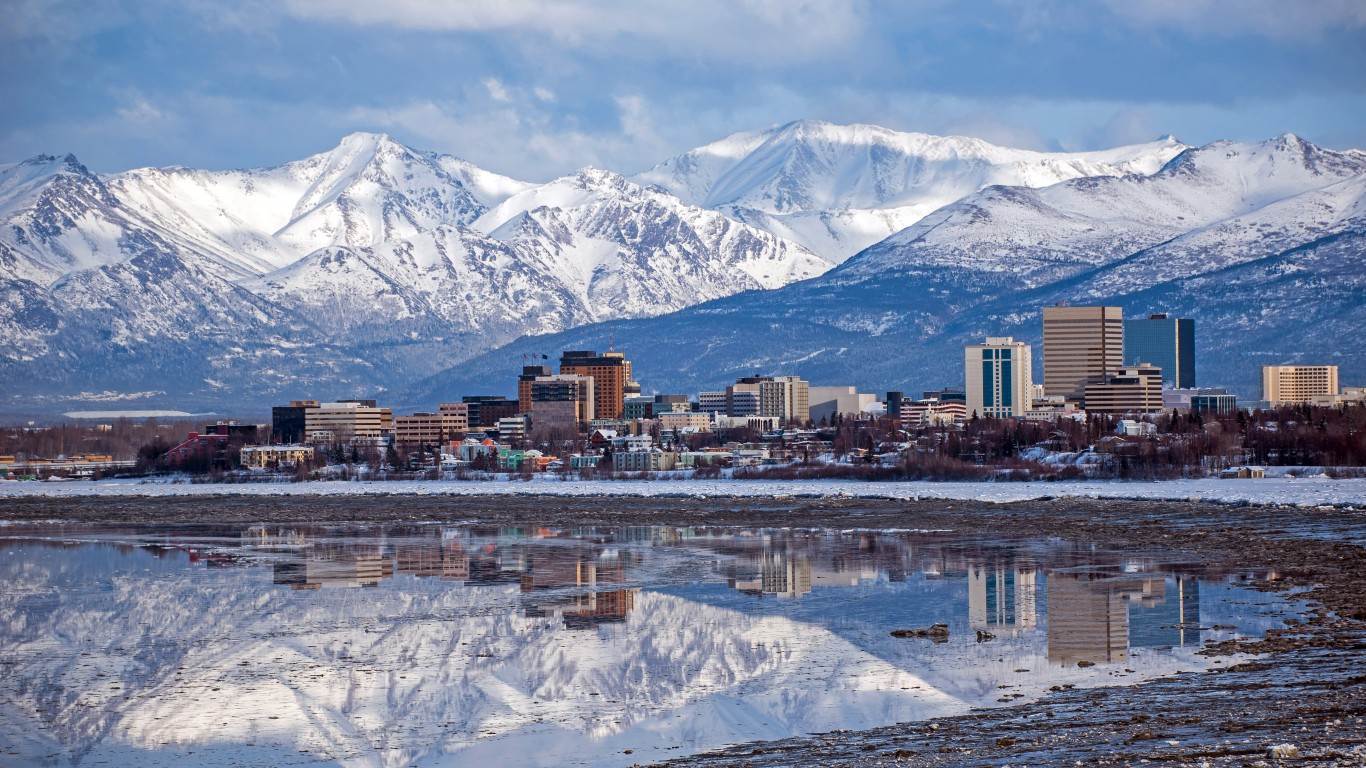
1. Alaska
> Time zone: Hawaii-Aleutian Time and Alaskan Time
> Population: 731,545
Alaska used to have four time zones. In 1983, however, the government consolidated the time zones to two: Hawaii-Aleutian Time, which applies to the westernmost Aleutian Islands, and Alaska Time for the rest of the state. The western most Aleutian Islands observe Hawaii-Aleutian Time.
[in-text-ad]
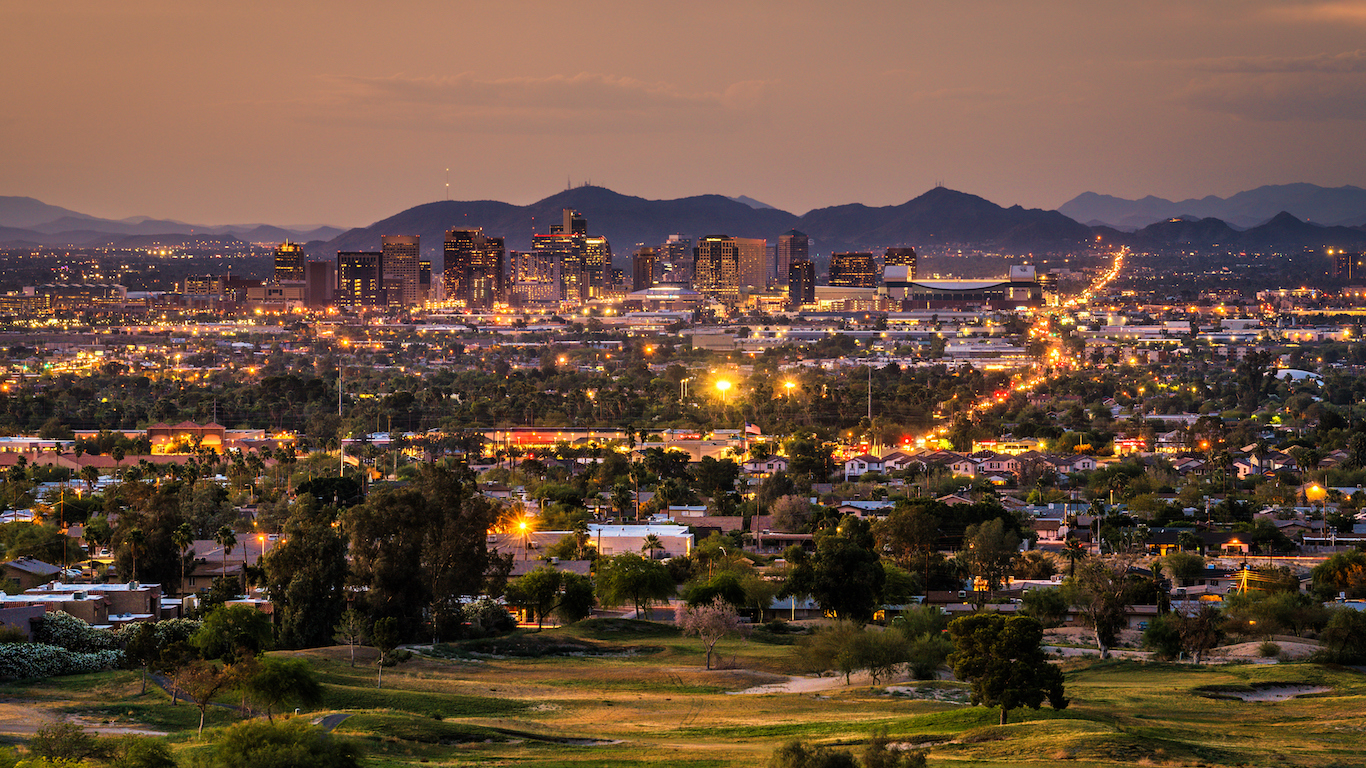
2. Arizona
> Time zone: Arizona Time
> Population: 7,278,717
With the exception of the people of the Navajo Nation, Arizona does not set the clocks forward by one hour in the spring for daylight saving time with the rest of the United States. Arizona stopped using DST following passage of the Energy Policy Act of 2005, which gave each state or territory the right to opt out of daylight saving time. Arizona opted out because the state’s climate is extremely hot, and extended daylight hours were not needed since it was assumed that people prefer to do activities in cooler evening temperatures.
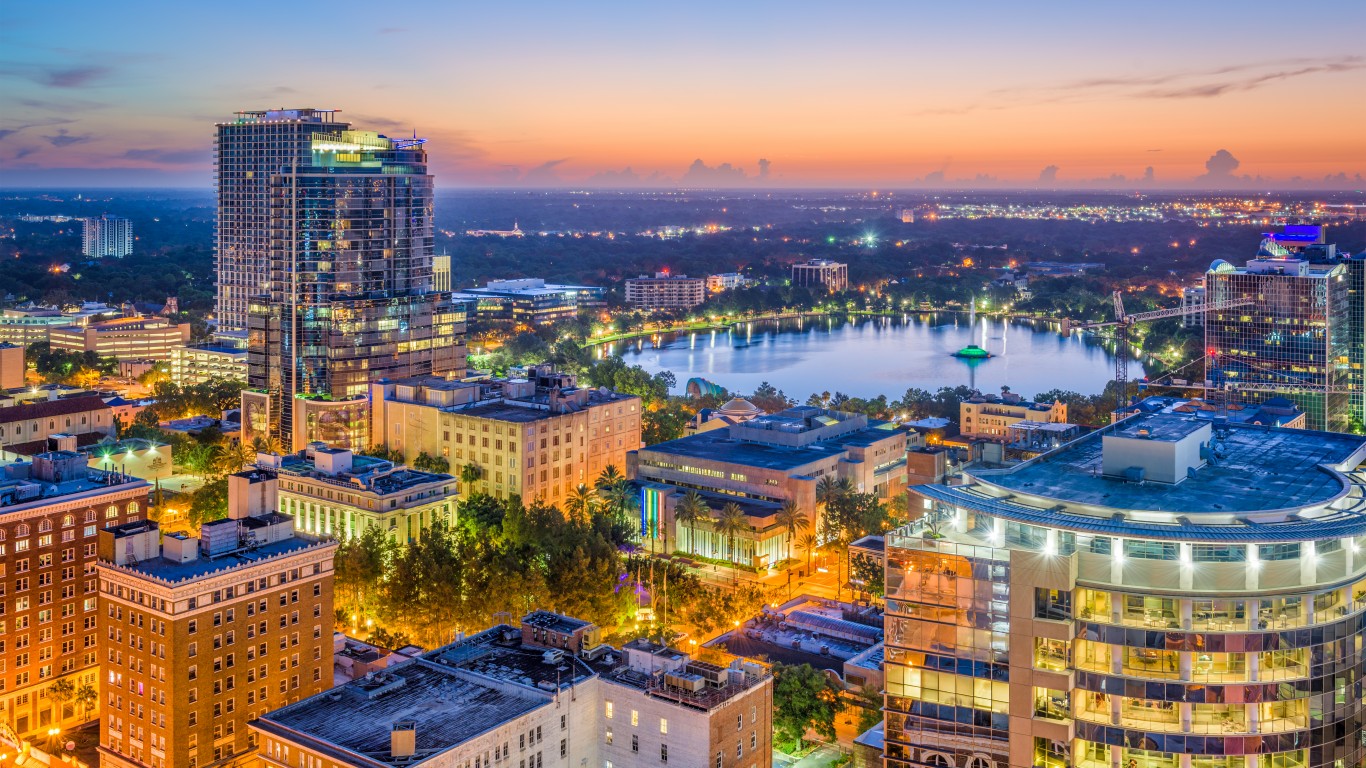
3. Florida
> Time zone: Central Time (western panhandle) and Eastern Time
> Population: 21,477,737
In Florida, the Eastern and Central time zones divide along the Apalachicola River. Eastern Time is called “fast time” and Central Time is called “slow time.” In 1982, Gulf County voters were given the opportunity to switch to Central from Eastern Time, but by a decisive margin they chose to remain in “fast time.”
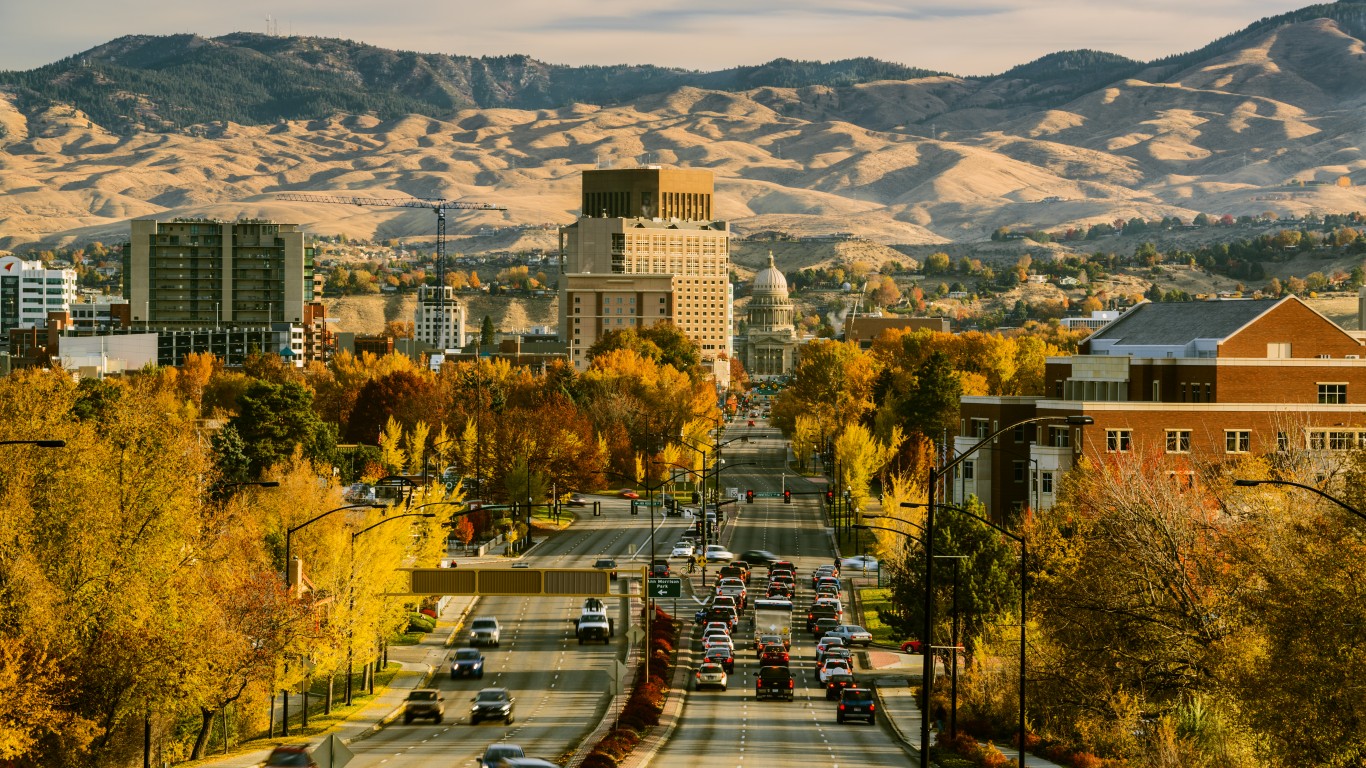
4. Idaho
> Time zone: Pacific Time (northern panhandle) and Mountain Time
> Population: 1,787,065
One of the more visible indicators of the time zone border in Idaho is the Time Zone Bridge in Riggins that spans the Salmon River. The bridge divides the Pacific Time Zone from the Mountain Time Zone. Politicians have recently raised the possibility of shifting the northern part of the state to Mountain Time all year to be in the same time zone as the state capital of Boise.
[in-text-ad-2]

5. Indiana
> Time zone: Central Time and Eastern Time
> Population: 6,732,219
For much of its history, all of Indiana was in the Central Time Zone. That changed in 1969, when the federal government established time zone boundaries that put six counties in the northwestern part of Indiana and six in the southwestern section in the Central Time Zone, with the remaining 80 counties in the Eastern Time Zone. Eventually, two other counties shifted to the Eastern Time Zone.

6. Kansas
> Time zone: Mountain Time (a small western notch) and Central Time
> Population: 2,913,314
In Kansas, all but four observe Central Time. The four most western counties are on Mountain Time. The time zones were shifted frequently in western Kansas in the 20th century. Kearny County was moved to the Central Time Zone from Mountain in 1990.
[in-text-ad]

7. Kentucky
> Time zone: Central Time and Eastern Time
> Population: 4,467,673
About 60% of Kentucky observes Eastern Time. In the fall of 2000, Wayne County moved to Eastern Time from Central. Proponents believed the shift would draw more commerce and better jobs to the county from the eastern part of the state, which is in the Eastern Time Zone. Opponents were concerned the change would mean children would have to wait for school buses in the dark. Louisville switched to Eastern Time from Central in 1961.

8. Michigan
> Time zone: Central Time (a small portion of the Upper Peninsula bordering Wisconsin) and Eastern Time
> Population: 9,986,857
All of Michigan used to be on Central Time but the shift to Eastern Time, led by Detroit moving to Eastern Time, occurred gradually over the 20th century. Eventually, only four counties that border Wisconsin — Gogebic, Iron, Dickinson, and Menominee in the western Upper Peninsula — remained the only counties on Central Time.
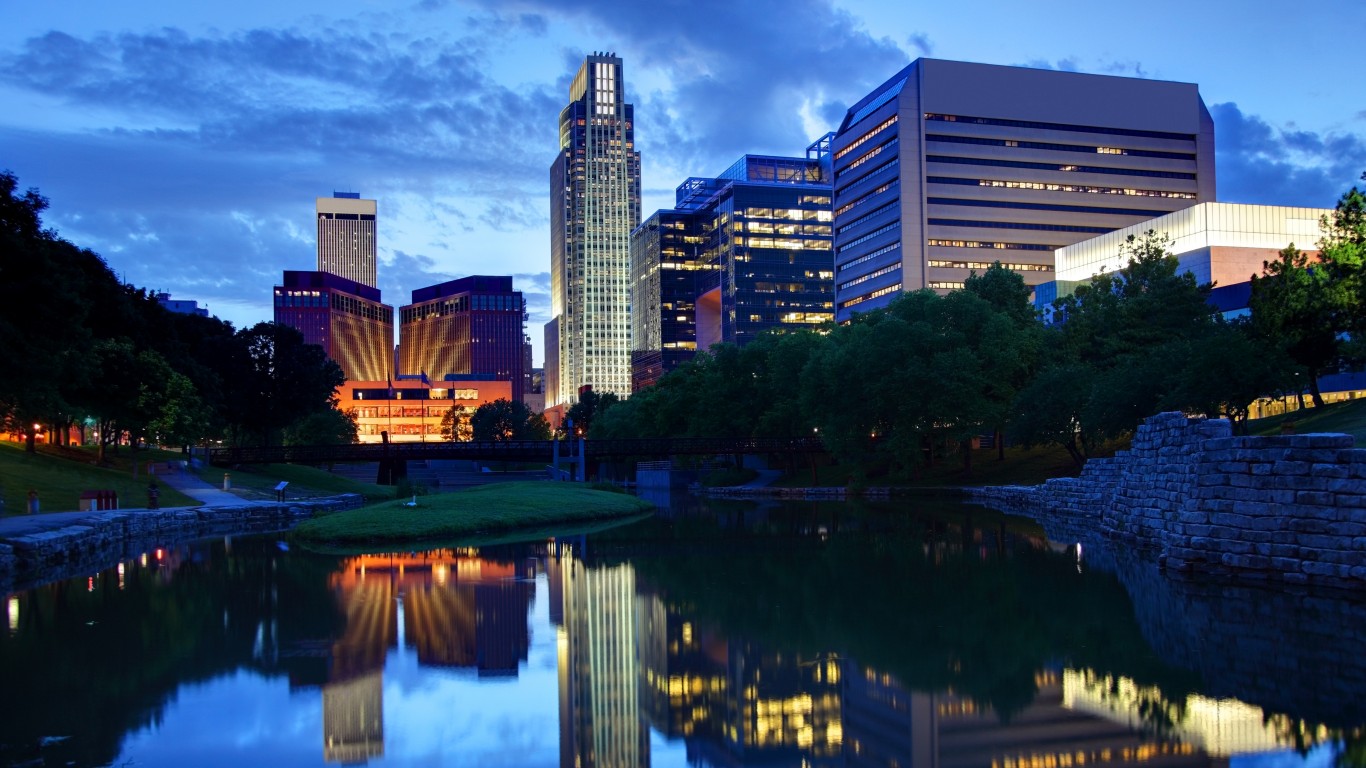
9. Nebraska
> Time zone: Mountain Time and Central Time
> Population: 1,934,408
The western section of the Cornhusker State, including all the counties in the state’s panhandle, is in the Mountain Time Zone, while most of the state’s population is in the Central Time Zone. Cherry County in the northern part of the state is divided by the Mountain and Central time zones.
[in-text-ad-2]

10. Nevada
> Time zone: Pacific Time and Mountain Time
> Population: 3,080,156
Virtually all of Nevada is on Pacific Time, except for West Wendover, which observes Mountain Time. Gaming and tourism are essential to the economy of the town, which relies on customers from neighboring Utah. Town leaders thought that being in the same time zone as Utah, which is on Mountain Time, could help business. The town’s petition to move to Mountain Time was approved by the U.S. Transportation Department in 1999.

11. North Dakota
> Time zone: Mountain Time and Central Time
> Population: 762,062
A southwestern portion of the High Plains state is on Mountain Time, while the remainder of North Dakota observes Mountain Time. In 2010, the Department of Transportation allowed Mercer County to shift to Central Time from Mountain. Oliver County migrated to Central Time from Mountain Time in 1992. Twelve of North Dakota’s 53 counties are either partially or entirely within the Mountain Time Zone, and all of them are west of the Missouri River.
[in-text-ad]

12. Oregon
> Time zone: Pacific Time and Mountain Time (an eastern bite)
> Population: 4,217,737
Most of the Pacific northwestern state observes Pacific Time, except for the northern part of Malheur County, which borders Idaho and observes Mountain Time. Malheur is sparsely populated (30,725) and is more closely linked economically to Idaho, which is on Mountain Time.

13. South Dakota
> Time zone: Mountain Time and Central Time
> Population: 884,659
South Dakota is virtually divided down the middle between Mountain and Central Time. Sioux Falls, the state’s biggest city is on the eastern edge of the state and in the Central Time Zone. Rapid City, South Dakota’s second largest city, is in the western part of the state and in the Mountain Time Zone.

14. Tennessee
> Time zone: Central Time and Eastern Time
> Population: 6,829,174
The Central and Eastern time zones slice Tennessee into western and eastern halves. Country music hub Nashville and Memphis are in the Central Time Zone, and Chattanooga is in the Eastern Time Zone.
[in-text-ad-2]
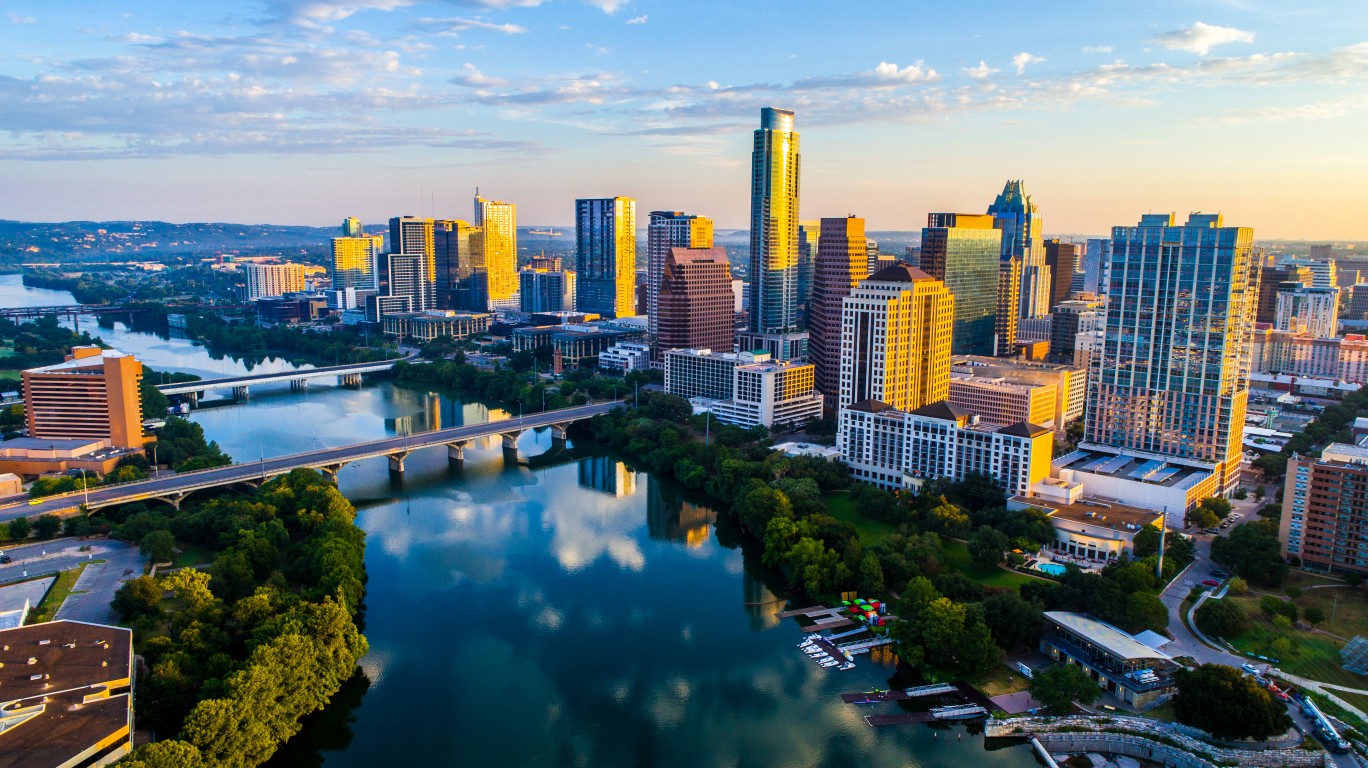
15. Texas
> Time zone: Mountain Time (far western portion including El Paso) and Central Time
> Population: 28,995,881
It may not be surprising that Texas, the largest state by area in the contiguous United States, has more than one time zone — Mountain and Central. What is surprising is that only El Paso and Hudspeth counties in the western part of the state observe Mountain Time. Being in the same time zone as Juarez, Mexico, and Las Cruces, New Mexico, makes doing business in those cities easier for Texans in the far western part of the state.
Is Your Money Earning the Best Possible Rate? (Sponsor)
Let’s face it: If your money is just sitting in a checking account, you’re losing value every single day. With most checking accounts offering little to no interest, the cash you worked so hard to save is gradually being eroded by inflation.
However, by moving that money into a high-yield savings account, you can put your cash to work, growing steadily with little to no effort on your part. In just a few clicks, you can set up a high-yield savings account and start earning interest immediately.
There are plenty of reputable banks and online platforms that offer competitive rates, and many of them come with zero fees and no minimum balance requirements. Click here to see if you’re earning the best possible rate on your money!
Thank you for reading! Have some feedback for us?
Contact the 24/7 Wall St. editorial team.
 24/7 Wall St.
24/7 Wall St. 24/7 Wall St.
24/7 Wall St.